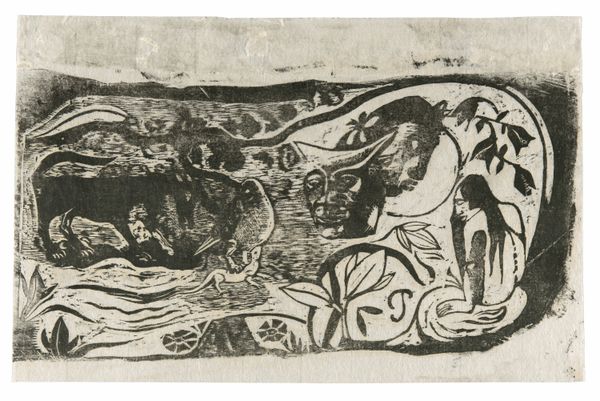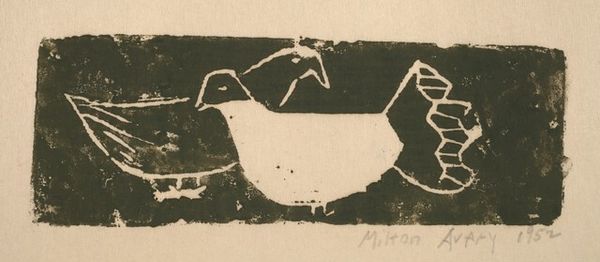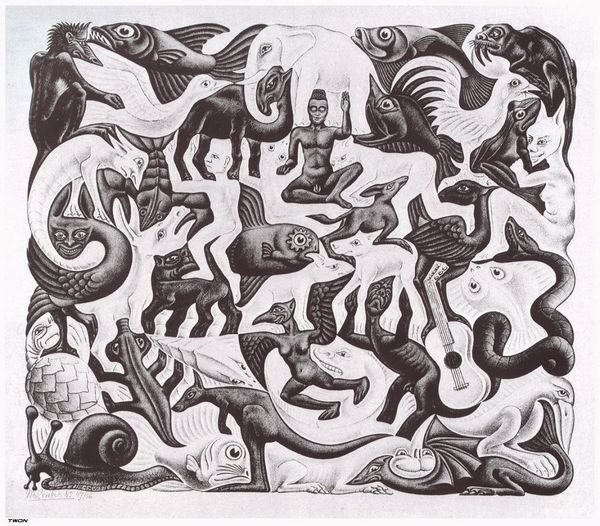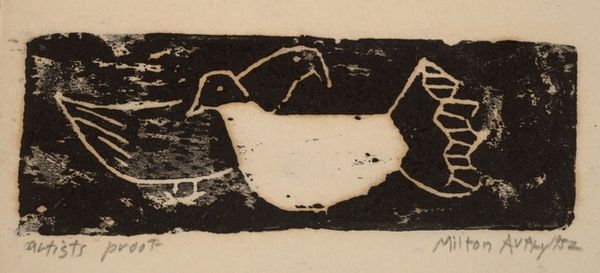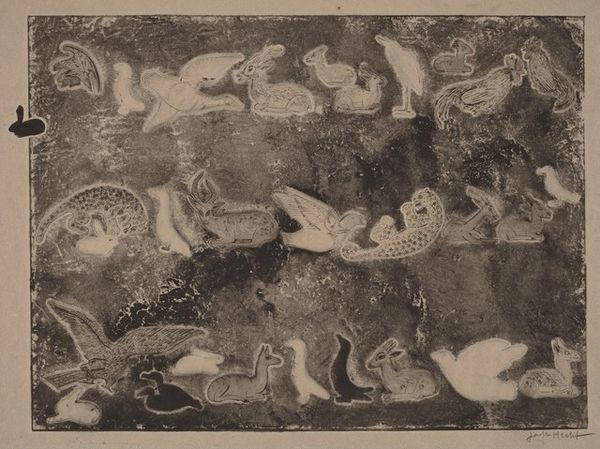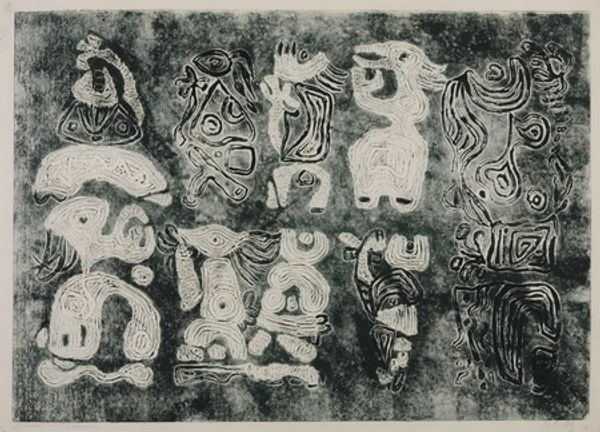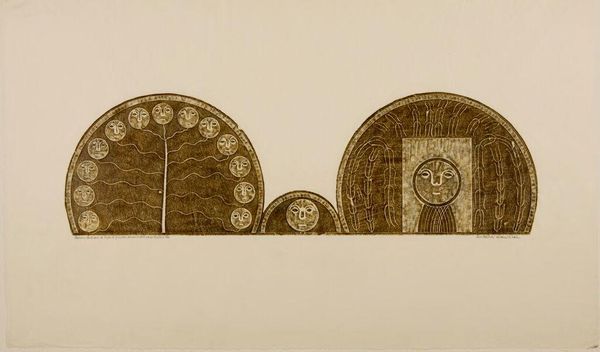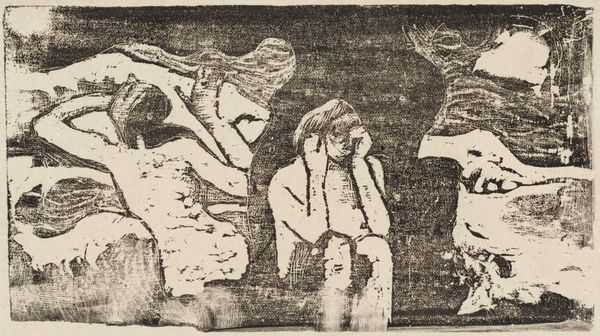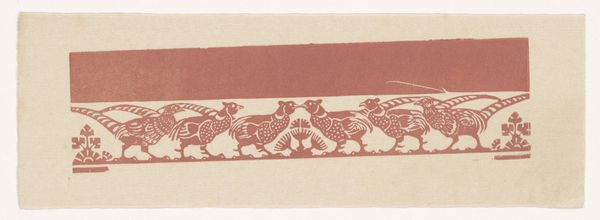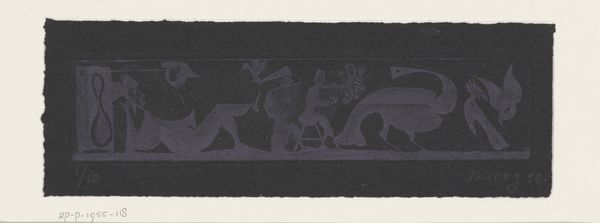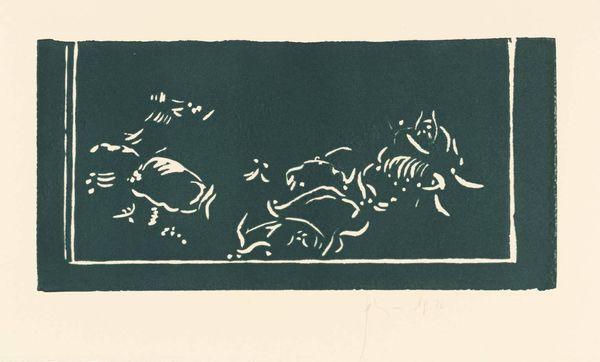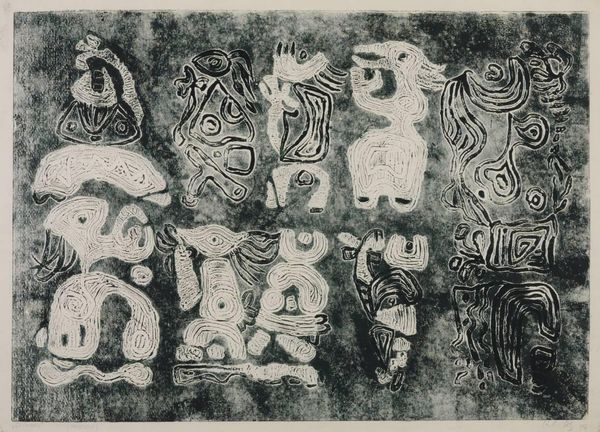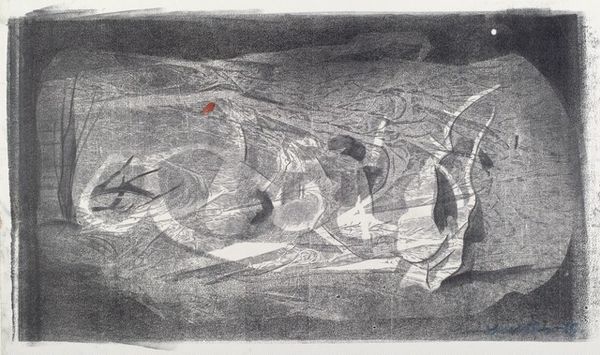
drawing, paper, pencil
#
pencil drawn
#
drawing
#
art-nouveau
#
pencil sketch
#
furniture
#
figuration
#
paper
#
pencil drawing
#
geometric
#
pencil
#
line
Copyright: Public domain
Editor: This is "Sketch of sofa for workshop" created by Nicholas Roerich in 1904, rendered in pencil on paper. It has a kind of stylized flatness. How would you interpret this drawing? Curator: I find it compelling in its geometrical arrangements, particularly how the shapes intersect and form new contours. Note how the repetition of the horse motif transforms the back of the sofa into an abstract pattern. What do you make of this use of repeating icons? Editor: I suppose it could turn functional design into something more decorative, elevating the craft. And how does that wavy design at the bottom contribute to the whole? Curator: The undulating lines at the base present a stark contrast to the regimented horses above. One reads as organic, flowing, the other as rigid and iconic. This dichotomy is further complicated by the cylindrical armrests, monolithic and almost severe. This juxtaposition, to me, establishes the fundamental dynamism of the piece. How do you see this dynamism? Editor: Now that you mention it, that tension does give the sketch energy. So, is it the strategic arrangement of shapes that dictates how we perceive this drawing? Curator: Precisely. Consider the conscious choices of line quality – thick, decisive strokes for the sofa's form against the more delicate linework for the decorative elements. The materiality of the sketch itself, the texture of the pencil on paper, contributes to our understanding of its design and the intentional structure within it. Editor: It’s fascinating how focusing on these formal choices really unlocks the visual language of the piece. I had only noticed it on a surface level. Curator: Indeed. By examining form, composition, and the intentional contrast, we gain a more insightful understanding into the aesthetic qualities inherent in this piece.
Comments
No comments
Be the first to comment and join the conversation on the ultimate creative platform.

